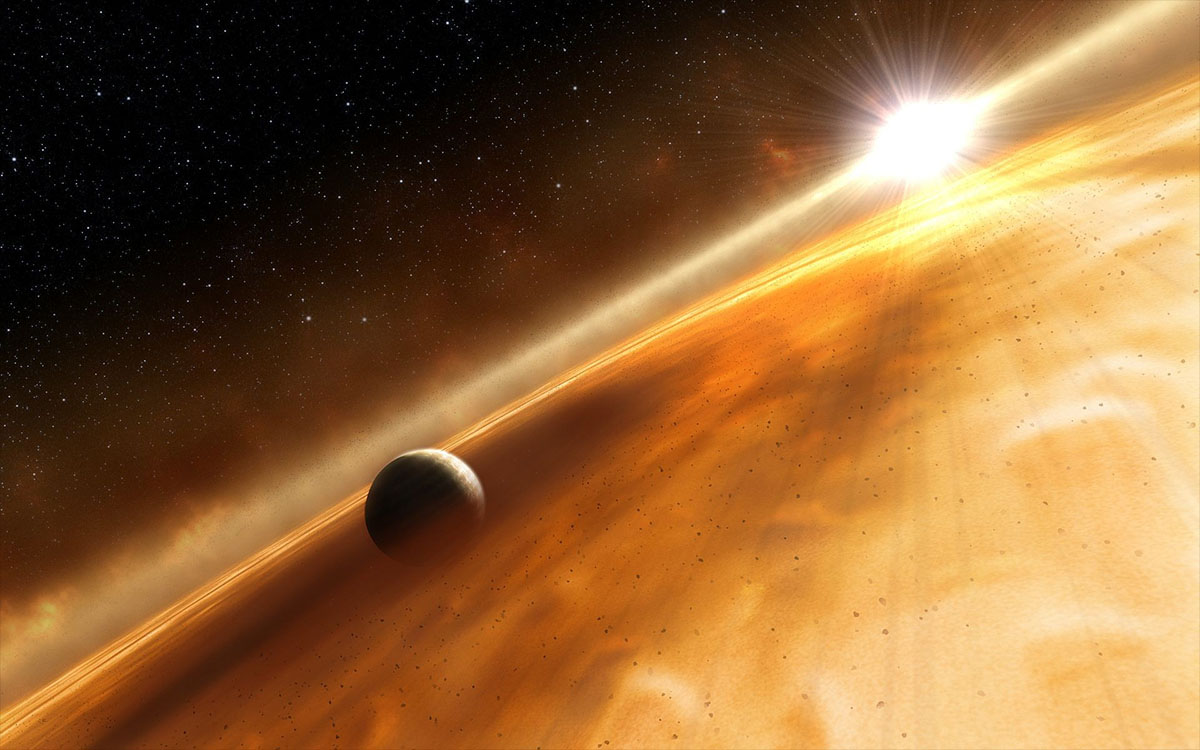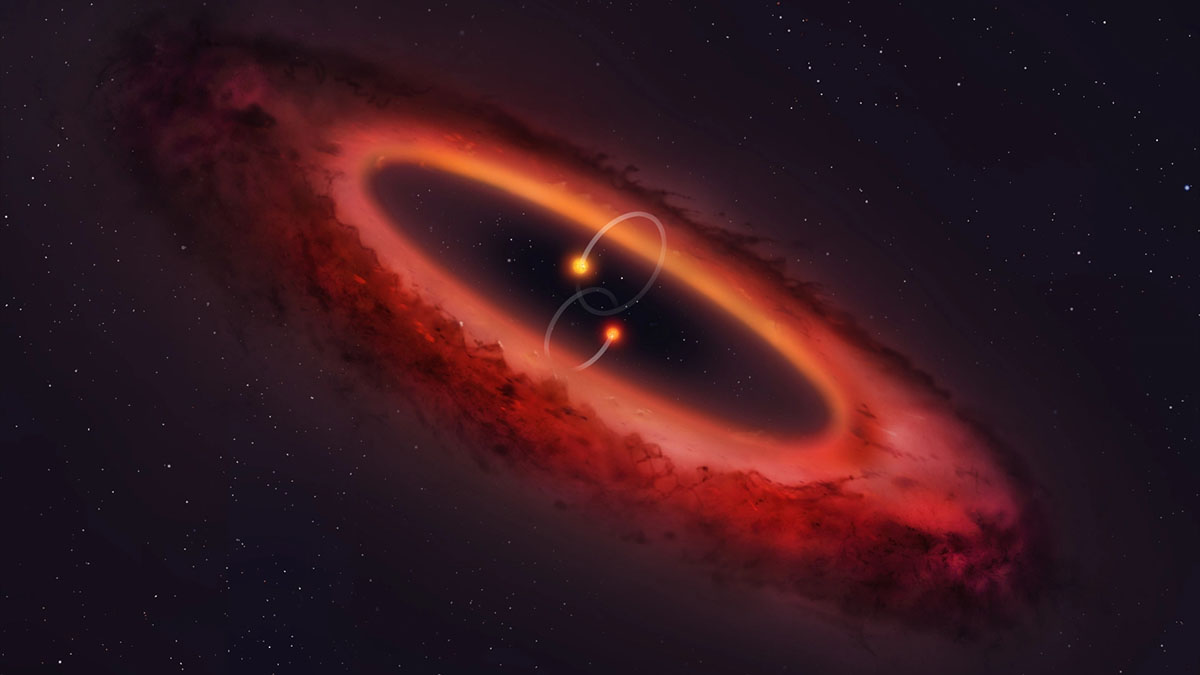this weird star system is, literally, flipping awesome

Some star systems simply don’t like conforming to cosmic norms. Take HD 98000, for example: It’s a binary system consisting of two sun-like stars and it also sports a beautiful protoplanetary disk of gas and dust. So far, so good; sounds pretty “normal” to me. But that’s only part of the story.
When a star is born, it will form a disk of dust and gas — basically the leftovers of the molecular cloud the star itself formed in — creating an environment in which planets can accrete and evolve. Around a single star (like our solar system) the protoplanetary disk is fairly well behaved and will create a relatively flat disk around the star’s spin axis. For the solar system, this flat disk would have formed close to the plane of the ecliptic, an imaginary flat surface that projects out from the sun’s equator where all the planets, more or less, occupy. There are “wonky” exceptions to this rule (as, let’s face it, cosmic rules are there to be broken), but the textbook descriptions of a star system in its infancy will usually include a single star and a flat, boring disk of swirling material primed to build planets.
Cue HD 98000, a star system that has flipped this textbook description on its head, literally. As a binary, this is very different to what we’re used to with our single, lonely star. Binary stars are very common throughout the galaxy, but HD 98000 has a little something extra that made astronomers take special note. As observed by the Atacama Large Millimeter/sub-millimeter Array (ALMA), its protoplanetary disk doesn’t occupy the same plane as the binary orbit; it’s been flipped by 90 degrees over the orbital plane of the binary pair. Although such systems have been long believed to be theoretically possible, this is the first example that has been found.
“Discs rich in gas and dust are seen around nearly all young stars, and we know that at least a third of the ones orbiting single stars form planets,” said Grant M. Kennedy, of the University of Warwick and lead author of the study published today in the journal Nature Astronomy, in a statement. “Some of these planets end up being misaligned with the spin of the star, so we’ve been wondering whether a similar thing might be possible for circumbinary planets. A quirk of the dynamics means that a so-called polar misalignment should be possible, but until now we had no evidence of misaligned discs in which these planets might form.”

This star system makes for some rather interesting visuals. Should there be a planetary body orbiting the stars on the inner edge of the disk, an observer would be met with a dramatic pillar of gas and dust towering into space with the two stars either side of it in the distance. As they orbit one another, the planetary observer would see them switch positions to either side of the pillar. It goes without saying that any planet orbiting two stars would have very different seasons than Earth. It will even have two different shadows cast across the surface.
“We used to think other solar systems would form just like ours, with the planets all orbiting in the same direction around a single sun,” added co-author Daniel Price of Monash University. “But with the new images we see a swirling disc of gas and dust orbiting around two stars. It was quite surprising to also find that that disc orbits at right angles to the orbit of the two stars.”
Interestingly, the researchers note that there are another two stars orbiting beyond the disk, meaning that our hypothetical observer would have four suns of different brightnesses in the sky. The most exciting thing to come out of this study, however, is that ALMA has detected signatures that hint at dust growth in the disk, meaning that material is in the process of clumping together. Planetary formation theories suggest that accreting dust will go on to form small asteroids and planetoids, creating a fertile environment in which planets can evolve.
“We take this to mean planet formation can at least get started in these polar circumbinary discs,” said Kennedy. “If the rest of the planet formation process can happen, there might be a whole population of misaligned circumbinary planets that we have yet to discover, and things like weird seasonal variations to consider.”
What was that I was saying about “cosmic norms”? When it comes to star system formation, there doesn’t appear to be any.
[ this article original appeared on Astroengine ]





